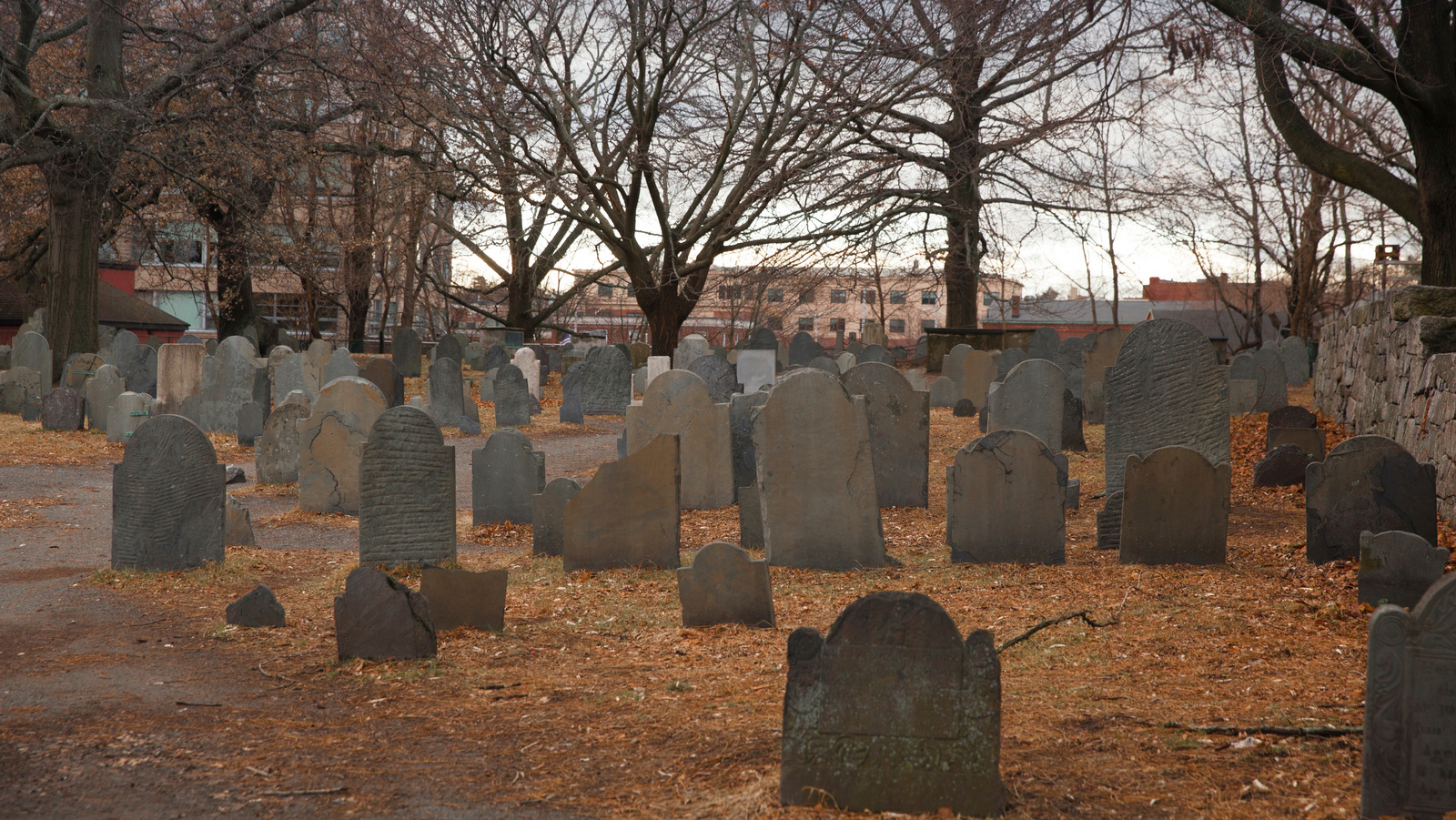
How Many People Died During The Salem Witch Trials? – Grunge
America’s bloodiest witch trials began with accusations against just three women and grew to include a huge number of ordinary people, culminating in the deaths of many innocents. Today the executions carried out in Salem still serve as a brutal reminder of the terrible evils that can be wrought at the hands of a superstitious mob.
The trouble began in the small colonial town with the accusations of two young girls: 9-year-old Elizabeth Parris and 11-year-old Abigail Williams, both of whom came down with strange symptoms, including fits and odd outbursts. The town doctor diagnosed them with “bewitchment,” according to History, and their bizarre ailments appeared to spread to several other young girls — and so too did the hysteria about witches.
Unfortunately, in the King Jame’s Bible, Exodus 18:22 states “Thou Shalt not suffer a witch to live,” a command 17th century people took particularly seriously. Over 150 people had to contend with accusations during the course of the Salem witch craze, including men, women, and small children. By the end of this dark saga, 25 people who were accused of practicing witchcraft had been killed or had died in jail, simply for being the victims of wild rumors.
The original 3 accused
 Bettmann/Getty Images
Bettmann/Getty Images
When the Salem witch trials began in the Spring of 1692, the ire of the community initially fell on just three women, all of whom were outsiders in some way. One was an enslaved woman imported from the Caribbean, named Tituba, the second a beggar, Sarah Good, and the third, an elderly lady called Sarah Osborn, who was widely believed to be “living in sin” with her indentured servant ever since her husband died (via Frances Hill’s “A Delusion of Satan”).
While two of the women denied the accusations, Tituba confessed for reasons unknown. In a shocking testimony, she claimed to have offered the devil her services for six whole years in exchange for certain favors. She described his demonic presence in great detail, terrifying her easily convinced 17th-century audience, and she told the court that there were many other witches working with her in the surrounding area, including the two other women who were on trial with her.
Today it is believed that Tituba’s confession may have been a clever ploy to get herself out of hot water but it ultimately resulted in the deaths of many other people. Curiously, her gambit seems to have paid off. Tituba never faced the hangman’s noose — and she later retracted her entire statement and the charges against her were lifted in 1693. Eventually, a slaver paid off her debts and bought her out of prison. Her ultimate fate is still unknown.
The 25 victims
 Library Of Congress/Getty Images
Library Of Congress/Getty Images
By mid-May 1692, there were already 36 “witches” locked up in the local jail — but nobody had been executed yet (per Frances Hill’s “A Delusion of Satan”). The first to actually hang was a woman named Bridget Bishop, who was accused of everything from magically stealing money, to killing her husband with black magic.
Another 18 were hanged in July, August, and September, and two “demonic” dogs were killed as well. Along with them, the husband of one of the witches was also accused and brutally “pressed” to death, simply for failing to enter a plea during his arraignment, per History. He was one of six men killed during the Salem witch trials.
Not everyone who was accused was found guilty or executed (some of those who confessed were actually spared from hanging) — at least seven people died in jail anyway. Perhaps most horrifying of all, the youngest person facing allegations of witchcraft — 4-year-old Dorcas Good — went insane while in prison, before she could be released. By October, some of the prisoners were released on bail from the overcrowded jail to prevent anybody else from dying in the cold miserable cells.
































































